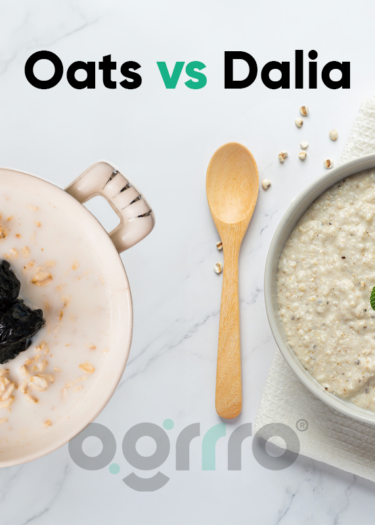- What is Diet?
- What is Yogic Diet?
- Health benefits of Yogic Diet
- How to follow it?
- Some Tips
What is Diet?
Some essential factors keep the human body alive. For instance, intake of food & water, breathing, sleep, thought processes, etc. are a few factors without which we can’t exist.
Usually, it is assumed that Diet is the food that any living body eats. We should also know that it is what a living body perceives despite the food, water, breath, conception, or ordination are also parts of the diet. And we know that food is such an important thing which controls most of the factors above. From the perspective of health, the diet has diverse & long-lasting effects on the body. It’s a vicious cycle.
What is Yogic Diet?
A Yogic Diet is what a yogi has to have to perform his/her yogic practices easily. Yogic diet is also known as ‘Mitahara’ or ‘Alpahara’. ‘Mitahara’ is derived from two words – ‘Mita’ & ‘Ahara’, where ‘Mita’ means balanced & ‘Ahara’ is food (diet) which is collectively called balanced diet & Alpahara is also derived from two words- ‘Alpa’ & ‘Ahara’, where ‘Alpa’ means limited, collectively called limited diet.
So, the Yogic diet includes food that is nutritious, balanced, limited & easy to digest.

To perform yogic practices, a yogi has to take a diet in such a systematic manner so that he/she may not feel any obstacles in their practices. If one is having difficulty in digestion of a particular food, then it’s a hindrance in their practices because of the food taking so much time to digest.
Mitahara is not only easily digestible, moreover, it makes your mind, soul & body happy inside out. Its properties help a yogi to remain focused, concentrated, unhindered & steady.
For example, a yogic diet usually contains vegetables, fruits, seeds, nuts, natural oil, lentils and whole grains in an appropriate proportion, and is consumed at an appropriate time to gain good health.
Health benefits of a Yogic Diet
Here are some health benefits of a yogic diet:
- Fast & easy to digest
- Promote digestive health
- Balance appetite
- Boost immunity
- Help to concentrate easily
- Make the mind & soul happy
- Enhances mood
How to follow it?
‘Jatharagni’ is the digestive fire that helps in digestion of food to provide energy and deals with the enzymes & hormones in the body. Also, there are three doshas in the human body – Vaat, Pitt & Kaph whose composition affects the body. Their composition impacts the body according to the food that we consume. An individual should know which dosha is imbalanced in his/her body so that he/she can take a suitable diet that can balance their doshas.
According to the texts of Jyotsna Tika,
“द्वौ भागौ पुरयेदन्नैस्तोयेनैकम प्रपूरयेत |
वायो: संचरणार्थाय चतुर्थभवशेषयेत ||”
This verse wants to convey that a person consuming a full fledged meal must fill 2 parts (50%) with solid food, 1 (25%) with liquid and the remaining 1 (25%) with air (keep 25% space for air circulation).
According to the book Gheranda Samhita, a meal should be simple, pure, soothing, easy to swallow and digest, should not create any kind of addiction and should be able to satisfy hunger leaving behind ample space in the stomach for movement of food in the digestive tract. Research scholars have called it Mitahara.
Half of the stomach should be filled with Anna (grain/solid food), the third part with Jal (water/liquid) & the remaining fourth part should be kept empty for air circulation. This will balance the three doshas in the body & ultimately will lead to the balance of the three gunas as well.
Diet from 3 perspectives:
- Quantity
- Quality
- Psychology
Quantity:
A balanced quantity of an individual food item like fruits, vegetables, lentils (read more about it here.) etc. in a meal is required. One should eat the food keeping 1/4th of the appetite.

Quality:
Qualities of a balanced diet are as follows:
- Food should be easy & fast to digest. For example – organic dalia, moong dal, etc. Avoid contradictory foods, such as milk with salt, that disturb the digestion process when taken together.
- Food should be had while hot and fresh.
- Food should be seasonal & must be taken at a favorable time of the day.
- Food that is pure, sweet & contains good fats, should be present in a meal. For example – Organic Fruits, Organic Honey, Ghee, Butter, etc.
- Food should be clean & hygienic.
- Make sure to avoid food that you are allergic to, as food facilitates the functioning of the body rather than hindering the health of your body.

According to the book Hathpradeepika, one must include Milk, Ghee, Butter, Honey, Rock Sugar, etc. in a diet.
According to the book Gheranda Samhita, one should eat clean Barley Sattu, Wheat flour, Yellow lentils (Moong dal), Gram, etc. without husk. Include green vegetables like Pointed Gourd (Parwal), Jackfruit (Katahal), Bitter Gourd (Karela), etc. Add Cucumber, Banana, other seasonal green vegetables & Wild Spinach (Bathua).
Psychology:
One should have a meal with a positive & healthy state of mind specifically. Food impacts either directly or indirectly on the mind & conscience. It has a huge contribution towards the health of the mind & spirit as well. There’s a belief, “sound mind, sound body”.

Mind is one of the biggest factors for a healthy body. The quantities of the three gunas – Satvik, Rajasik & Tamsik get an increase or decrease from the diet as a major contributing factor. Satvik food stimulates the satvik mind & will motivate the mind accordingly. (Read more about it here.)
Some Tips:
Some tips according to Sage Charak are as follows:
- A meal should be sufficiently hot while having it.
- Have a greasy, mellow, smooth & pleasant diet. Food which includes ghee makes itself smooth to swallow (balsamic).
- Take the right & balanced amount of food.
- One can take a meal after the previous meal gets digested.
- Prohibit the contradictory food.
- Eat food at a suitable place with suitable utensils.
- One should neither eat too fast nor too slow.
- Take a meal calmly, focused, without talking & with self-assessment.
Other tips are:
- There should be at least a 1-hour gap between food & water intake. During the meal, one should not drink water.
- Food should not be spicy, much sour, and much salty.
- One should sleep after 3 hours of having a meal so that food digests before going to sleep.
- For a healthier & better life, add organic products in your diet such as Organic Wheat, Dalia, Fruits, Vegetables, Honey etc.
- Food should be cooked with positive emotions and a healthy mindset.






